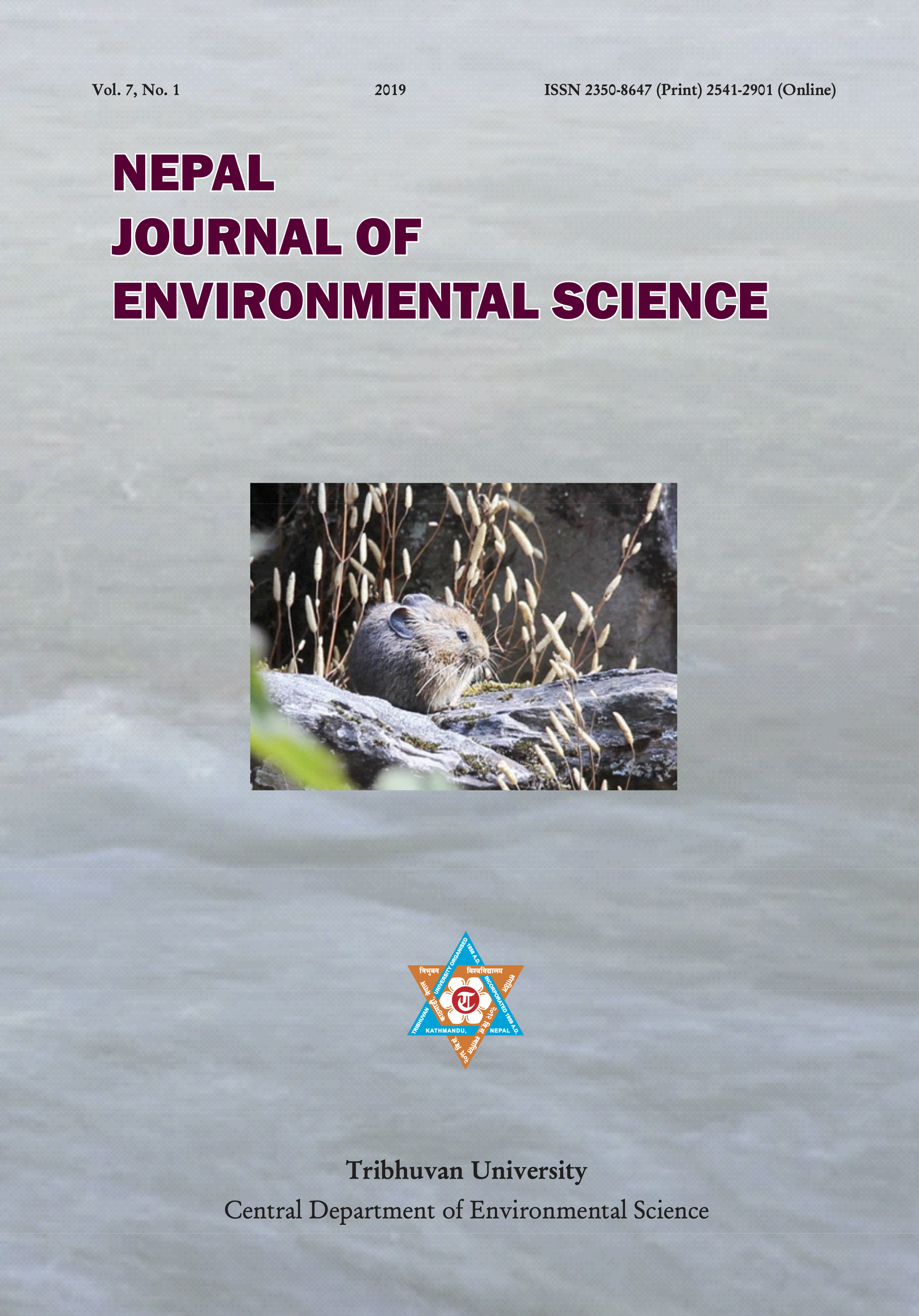Bioaccumulation of mercury in fishes of Jagadishpur Reservoir, Nepal
DOI:
https://doi.org/10.3126/njes.v7i0.34370Keywords:
Fish diet, Stable isotopes of carbon, Stable isotopes of nitrogen, Total mercury, Trophic positionAbstract
Stable isotope ratios of nitrogen (δ15N, ‰) and carbon (δ13C, ‰), accompanied by stomach contents were used to assess the food chain and trophic transfer of mercury in fifty-three marketable sized fish belonging to five species (Channa punctatus, Mystus vittatus, Nandus nandus, Puntius sophore and Xenentodon cancila) from the Jagadishpur Reservoir, Nepal. The highest total Hg concentration was found in X. cancila with an average of 800.42(±279.36) µg/kg exceeding the international marketing limit (500 mg/kg), a carnivorous species. However, except for some individuals of N. nandus, total Hg concentrations in other fish species in the present study were significantly lower than that limit. The fish community had at least two trophic levels (Δ15N > 5.6), C. punctatus with the highest and M. vittatus the lowest signatures of δ15N, which was also supported by the stomach content analysis. There was neither correlation between total Hg and δ15N nor connectivity in food resource utilization (based on δ13C), indicating no biomagnification among these fish species. In addition, Hg concentrations were not significantly correlated to total fish length in any of the species. Fish species in the present study have low Hg content accompanied by low biomagnification through the studied fish community.
Downloads
Downloads
Published
How to Cite
Issue
Section
License
This license enables reusers to distribute, remix, adapt, and build upon the material in any medium or format for noncommercial purposes only, and only so long as attribution is given to the creator.




